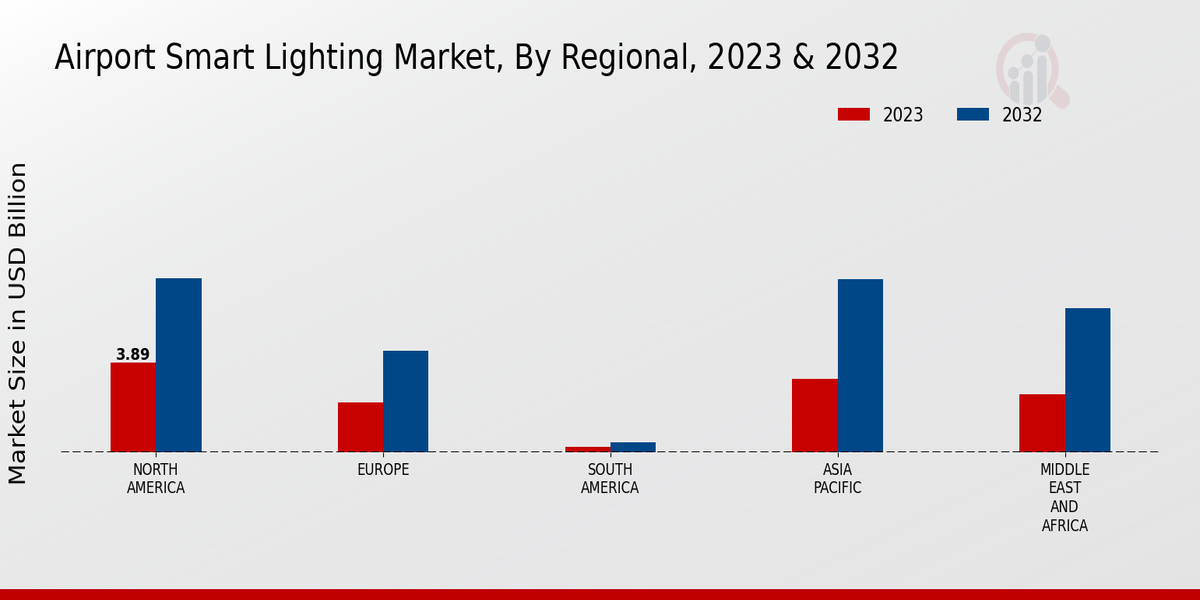Airport Smart Lighting Market Summary
The Global Airport Smart Lighting Market is projected to grow from 11.22 USD Billion in 2024 to 31.40 USD Billion by 2035, reflecting a robust growth trajectory.
Key Market Trends & Highlights
Airport Smart Lighting Key Trends and Highlights
- The market is expected to experience a compound annual growth rate (CAGR) of 10.39 percent from 2025 to 2035.
- By 2035, the market valuation is anticipated to reach 31.4 USD Billion, indicating substantial expansion.
- in 2024, the market is valued at 11.22 USD Billion, showcasing a strong foundation for future growth.
- Growing adoption of smart lighting technology due to increasing energy efficiency requirements is a major market driver.
Market Size & Forecast
| 2024 Market Size | 11.22 (USD Billion) |
| 2035 Market Size | 31.40 (USD Billion) |
| CAGR (2025-2035) | 9.81% |
Major Players
Signify, Osram, Cree, Schneider Electric, Hubbell Lighting, Zumtobel Group, Thorn Lighting, Eaton, Hella, Dialight, Tvilight, Philips Lighting, Acuity Brands, GE Lighting, Ketra

























